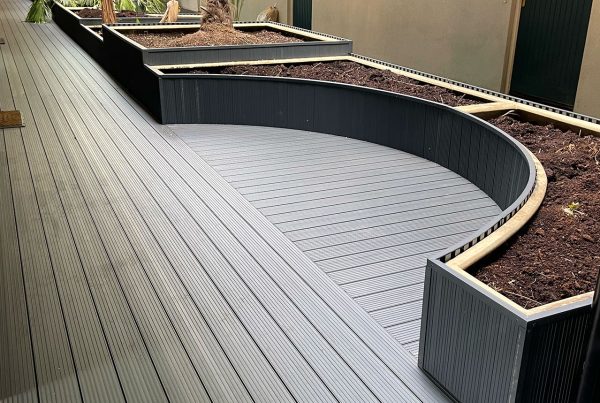Learn the key differences between A1 cladding and A2 cladding, including fire resistance, material composition, and regulatory standards, to make an informed choice for your project.
Introduction
Cladding plays a critical role in both aesthetics and safety in the realm of building and construction. At Alu Installations, we understand the importance of selecting the right cladding material to meet stringent safety standards while achieving the desired look for your building. Among the various options available, A1 and A2 cladding materials stand out for their exceptional fire resistance and performance. This blog aims to clarify the differences between A1 cladding and A2 cladding, helping you make an informed choice for your project.
Understanding Cladding Materials
Cladding materials serve as a building’s protective outer layer, shielding it from the elements while contributing to its architectural appeal. The importance of fire safety in cladding cannot be overstated, as it plays a crucial role in preventing the spread of fire and ensuring the safety of occupants. Both A1 and A2 cladding materials are designed to meet high standards of fire resistance, but there are significant differences between the two.
What is A1 Cladding?
A1 cladding is classified as non-combustible, meaning it does not contribute to the spread of fire at any stage. This highest level of fire resistance makes A1 cladding an ideal choice for buildings where fire safety is paramount. A1 cladding materials typically include stone, concrete, glass, and certain types of metal. The primary benefit of A1 cladding is its exceptional ability to withstand high temperatures without igniting or releasing toxic fumes, ensuring maximum safety for building occupants.
What is A2 Cladding?
While not entirely non-combustible, A2 cladding is still classified as having very limited combustibility. It includes materials that only produce a small amount of heat when exposed to fire. A2 cladding often contains a mixture of non-combustible and limited combustible materials, such as certain types of treated wood or composite materials. The benefits of A2 cladding include a balance between high fire resistance and a wider range of design options, making it suitable for various architectural applications.
Key Differences Between A1 and A2 Cladding
The primary difference between A1 and A2 cladding lies in their fire resistance. A1 cladding is non-combustible and does not contribute to fire spread, whereas A2 cladding has limited combustibility and produces minimal heat in a fire. This difference in fire performance is crucial when choosing the appropriate material for your building. Additionally, A1 cladding generally comprises materials like stone and metal. At the same time, A2 cladding can include a combination of non-combustible and limited combustible materials. Regulatory standards also vary, with A1 cladding often meeting stricter fire safety regulations. Cost and availability differ, with A1 materials potentially being more expensive and less versatile in design compared to A2 cladding.
Applications of A1 Cladding
A1 cladding is particularly suited for high-risk buildings where fire safety is a top priority, such as hospitals, schools, and high-rise residential buildings. Its non-combustible nature provides peace of mind in environments where fire risk needs to be minimised. Case studies have shown that buildings utilising A1 cladding demonstrate exceptional fire performance, contributing to safety and compliance with stringent building regulations.
Applications of A2 Cladding
A2 cladding is versatile and suitable for various projects, including commercial buildings, offices, and residential structures. Its combination of fire resistance and design flexibility allows architects and builders to achieve safety and aesthetic goals. Many projects have successfully implemented A2 cladding, showcasing its ability to meet fire safety standards while providing a visually appealing finish.
Regulations and Compliance
In the UK, building regulations mandate strict fire safety standards for cladding materials. Both A1 and A2 cladding must comply with these regulations, but due to its non-combustible nature, A1 cladding often meets the highest levels of fire safety compliance. International standards also recognise the importance of fire-resistant cladding, ensuring global consistency in safety practices.
Environmental Impact
Sustainability is a growing concern in construction, and both A1 and A2 cladding materials offer environmental benefits. A1 cladding, composed of materials like stone and metal, tends to be more durable and recyclable, contributing to long-term sustainability. A2 cladding, with its mix of materials, can also be designed to minimise environmental impact, offering a balance between performance and eco-friendliness.
Choosing the Right Cladding for Your Project
Selecting the appropriate cladding material involves considering factors such as fire resistance, design requirements, regulatory compliance, and cost. Consulting with experts like Alu Installations can provide valuable insights and recommendations tailored to your project’s needs.
Conclusion
Understanding the differences between A1 and A2 cladding is essential for making an informed decision that ensures safety and aesthetic appeal. At Alu Installations, we are committed to providing high-quality cladding solutions that meet the highest fire resistance and design excellence standards. Whether you choose A1 or A2 cladding, you can trust us to deliver materials that enhance the safety and beauty of your building.




